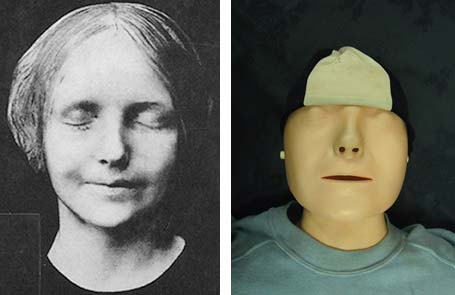Ira Glass OK, I am holding a new iPhone 4S in my hand. This is the one that you can talk to, and it talks back. It’s a program called Siri. So let’s try this. I’m just going to hold it up to the microphone here and push a button. Siri, where do you come from?
Siri Software I, Siri, was designed by Apple in California.
Ira Glass Where were you manufactured?
Siri Software I’m not allowed to say.
Ira Glass Why?
Siri Software Good question. Anything else I can do for you?
(…)
Ira Glass Flip over the phone– right here on the back it’s printed, assembled in China.
(…)
Mike Daisey We think our crap comes from China, right? Kind of a generalized way. China. But it doesn’t come from China. It comes from Shenzhen. It’s a city. It’s a place. (…) We get out to the edge of the core of Shenzhen and we come to the gates. Because 31 years ago, when Deng Xiaoping carved this area off from the rest of China with a big red pen, he said, this will be the special economic zone. And he made a deal with the corporations. He said listen, use our people. Do whatever you want to our people. Just give us a modern China. And the corporations took that deal, and they squeezed and they squeezed. And what they got was the Shenzhen we find today.
And on the other side of the gates it’s the factory zone. And whew, it’s like going from the Eloi to the Morlocks, everything changes. I’ve never seen anything like it. Everything is under construction. Every road has a bypass. Every bypass has a bypass. It’s bypasses all the way down. (…)
We are in a taxi right now in the factory zone. We are driving on our way to Foxconn. Foxconn, a single company, makes a staggering amount of the electronics you use every day. They make electronics for Apple, Dell, Nokia, Panasonic, HP, Samsung, Sony, Lenovo, a third of all of it. That’s Foxconn. And at this plant they make all kinds of things, including MacBook Pros and iPhones and iPads. (…)
The Foxconn plant in Shenzhen has 430,000 workers. That can be a difficult number to conceptualize. I find it’s useful to instead think about how there are more than 20 cafeterias at the plant. And then you just have to understand that workers told me that these cafeterias can hold up to 10,000 people. So now you just need to visualize a cafeteria that seats 10,000 people (…)
I talked to more than 100 people. I met five or six who were underage.
{ WBEZ/This American Life | Continue reading }





















